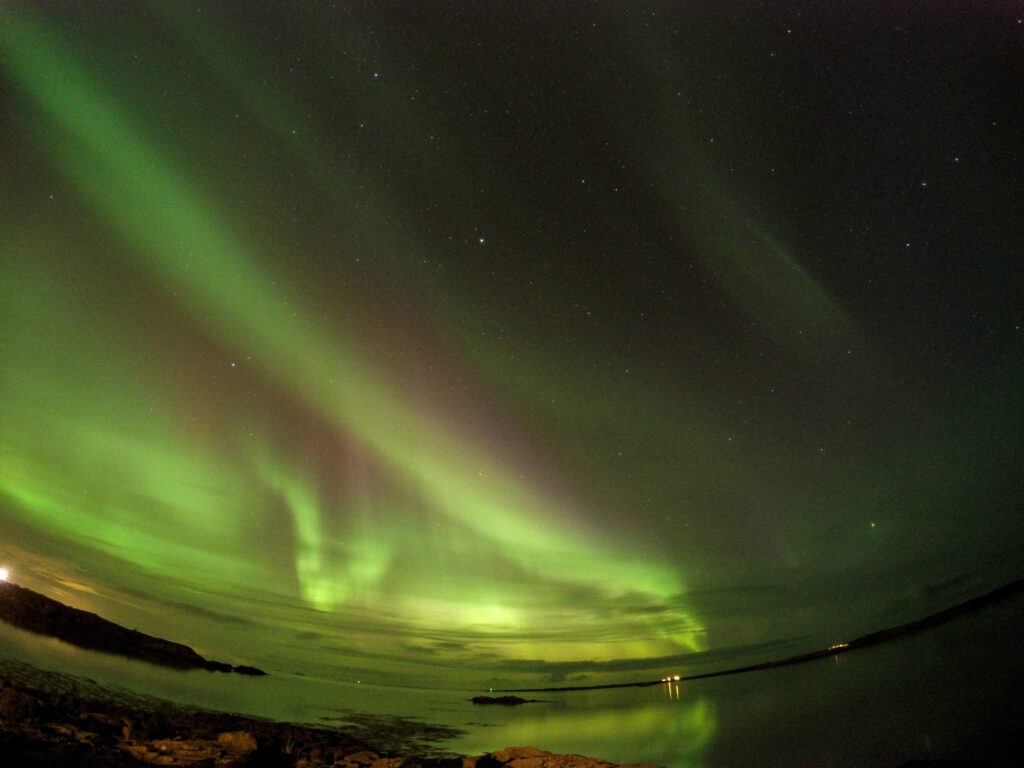
There’s nothing quite like witnessing the beauty of the northern lights dance above you while traveling in Iceland. Taking in the green, pink, blue, and purple waves of lights in the sky will quickly solidify as a core memory. The northern lights, formally known as the aurora borealis, appear when solar particles from the sun collide with Earth’s magnetic field. Many travelers dream of glimpsing these dancing lights when visiting Iceland. Some plan their entire trips to see the northern lights but leave disappointed. While there isn’t a way to guarantee you will see the aurora borealis when visiting the land of fire and ice, there are a few helpful tips that will certainly get you that much closer to witnessing their beauty. That’s why I created this post, which is all about how to see the northern lights in Iceland.
This post contains affiliate links, and I may earn a small commission when you click on the links at no cost to you.
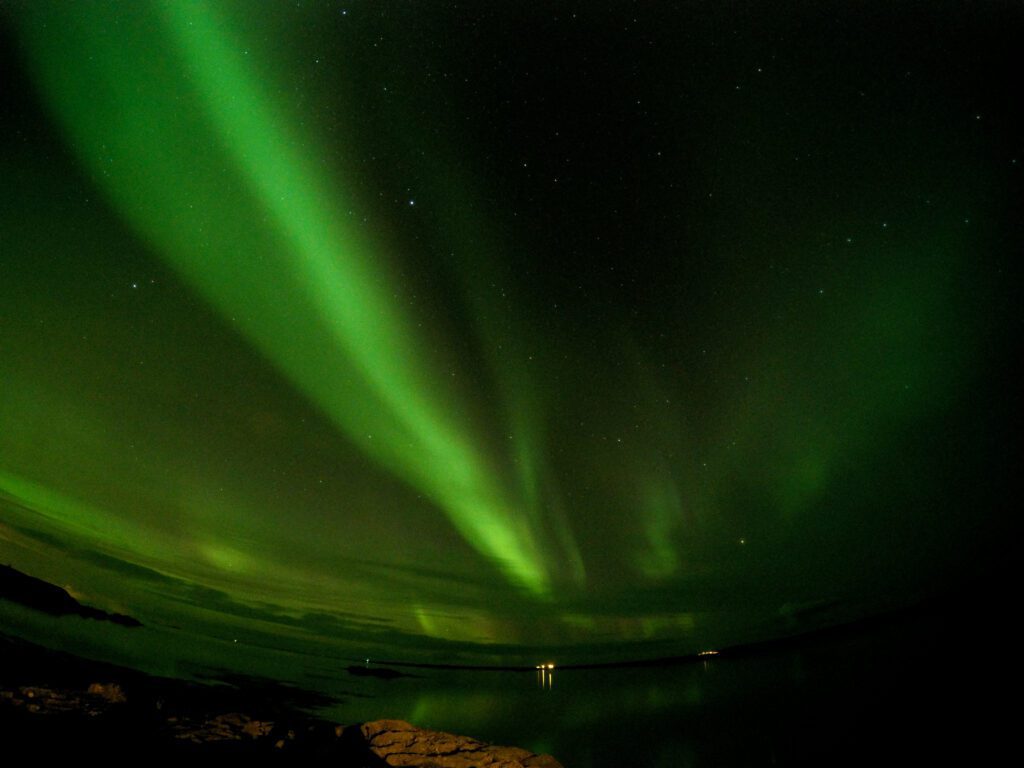
Visit During the Peak Season
The first tip for how to see the northern lights in Iceland is to visit during the peak season. What exactly is the peak season, you ask? It’s when the skies are the darkest since that’s how you can see the lights clearly. This means you’ll need to book your trip to Iceland during the fall or winter months of September through mid-April. Let me be clear: even if you book during the peak season, that won’t guarantee you see them. When Bill and I visited Iceland at the end of September/early October, we were incredibly fortunate to see the northern lights five times on that trip. However, I know many people who book their trips during peak season and don’t see the northern lights once. The other tips below, coupled with visiting during the fall and winter months, should increase your chances.
Traveling to Iceland and looking for an epic place to witness the Northern Lights? Check out my blog post about GeoSea Geothermal Sea Baths.
Check the Aurora Forecast
The next tip for how to see the northern lights in Iceland is to utilize the extremely handy aurora forecast map. That’s right; there is an official website dedicated to tracking the northern lights in Iceland. This forecast map identifies when and where you will have the best chance of seeing them, depending on the current conditions. The main condition to consider is cloud coverage. This might be a no-brainer, but it directly impacts your ability to see the northern lights even on the darkest of nights. The aurora forecast map will be your BFF if you visit Iceland to see the northern lights.
Go Searching for the Northern Lights
It’s true in life and when attempting to see the northern lights in Iceland: you don’t get what you want without putting in the effort. Iceland is a sizeable country, and occasionally, there will be areas where you won’t be able to see the lights, as well as other places where the lights will shine through. As I mentioned above, you’ll know where and when you can see the lights by using the aurora forecast website. If you see a spot on the aurora forecast Iceland map that looks promising to see the lights, get in your car and hunt for them!
If you need a comprehensive packing list for all your travel needs, I’ve got you covered! I created the ultimate packing list for your upcoming adventures, including carry-on essentials, toiletries, clothing, and location-specific items.
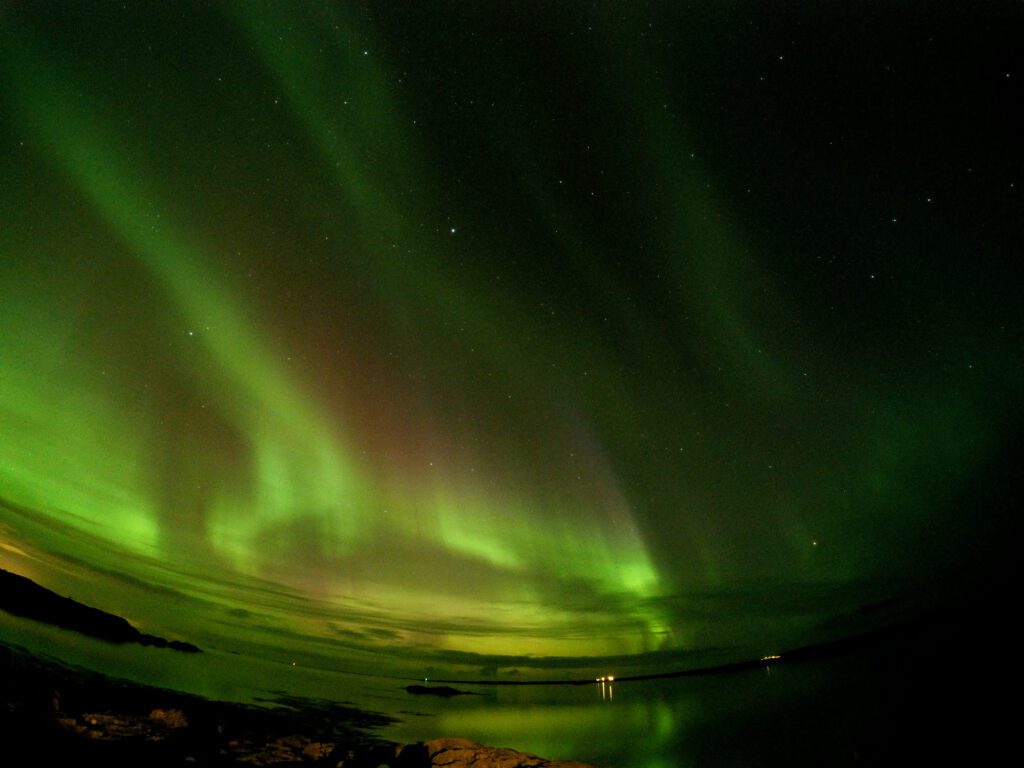
Avoid City Lights
An essential element of seeing the northern lights is a dark sky. What gets in the way of a dark sky? Lights. More specifically, city lights. For purposes of how to see the northern lights in Iceland, it’s best to avoid areas surrounding Reykjavík and Aukureyi since they have the most light pollution. Light pollution impedes the visibility of the aurora borealis and makes it difficult to see their beauty. Booking hotels and accommodations in more rural areas increases your chances of seeing the northern lights. If you’re staying near the cities but see the northern lights come up in the surrounding regions, get in your car and drive outside the city limits to improve your chance of seeing them.
Head North
As you know by now, darkness is vital to seeing the northern lights in Iceland. Iceland is located just south of the Arctic Circle and in the “auroral zone,” where the northern lights are most commonly visible. Another way to boost your chances of seeing the lights is to head north to the Westfjords and North Iceland. These regions have the most prolonged hours of darkness due to their proximity to the North Pole. Not headed that way? It’s not a problem; you can see the northern lights anywhere in Iceland!
Be Patient
I know, I know. This tip is on the less exciting side than the others. However, patience is another essential thing to keep in mind when figuring out how to see the northern lights in Iceland. The northern lights are unpredictable and can flare up at a moment’s notice. Even if positioned in the right location, you might end up waiting around in the evening hours for the lights to appear. I recommend dressing in warm layers, bringing snacks, and maybe a little wine while you wait.
Traveling to Iceland? Check out my 8-Day South & West Itinerary and 12-Day Ring Road & Westfjords Itinerary posts to plan your ultimate fire and ice adventure.
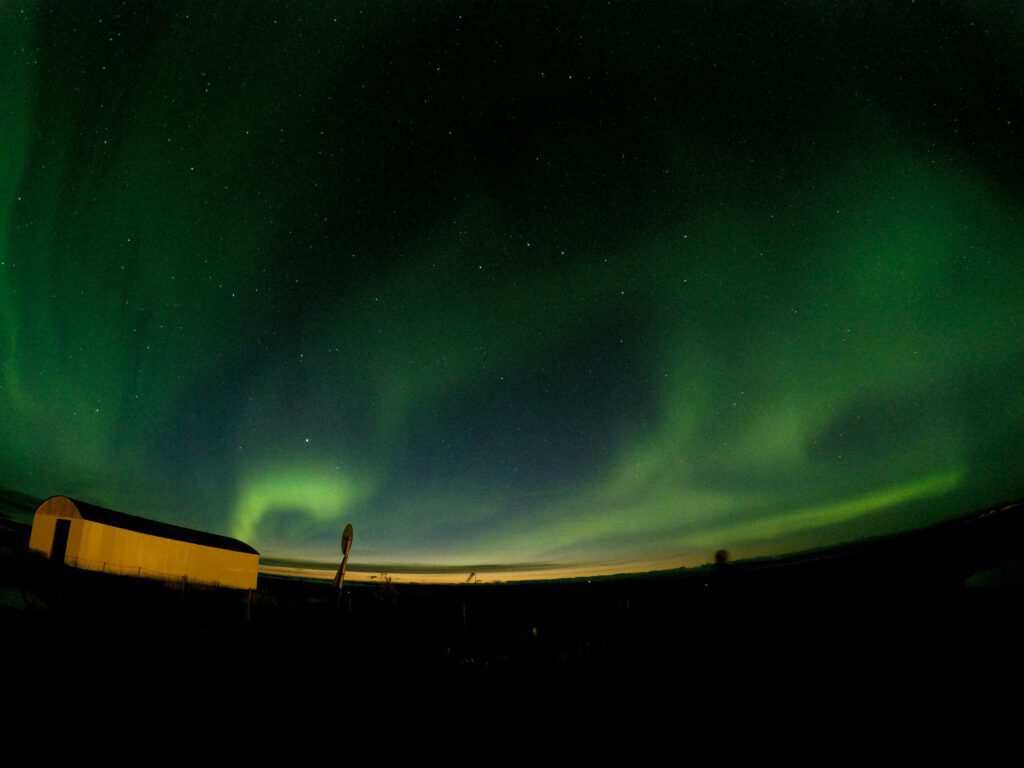
Book a Tour
One of the great things about traveling to Iceland to see the northern lights is the country’s dedication to its aurora borealis seekers. With the increasing popularity of this natural wonder, Iceland now offers tours designed to enhance your chances of seeing the lights. These tours, led by experts who know the best viewing locations based on the forecast, provide a sense of reassurance and guidance. You can even take your adventure to the sea with available boat tours!
Tips for Photographing the Northern Lights
If you are fortunate enough to witness the northern lights in Iceland, congratulations! It’s genuinely one of the most magical experiences you’ll ever see in your lifetime. If you’ve followed the tips outlined in this post on how to see the northern lights in Iceland, your chances of seeing them have significantly increased. But when you finally see them, will you know how to capture them on your camera or phone? Don’t worry; I’ve got you. Below are a few helpful photography tips for capturing the lights.
The first tip is to use a tripod. Northern lights photography requires long exposure, so using a tripod is critical to avoid blurry images. You don’t need anything fancy, just one that is sturdy and adjustable, like this one. We even used one like this on our first trip and propped it on a rock to capture our desired shots.
The next tip is to ensure your camera settings are set correctly. You’ll need to use a low aperture (f/2.8) to allow in the most light and a high ISO (800-3200) since it makes your lens more sensitive to light. In addition, you’ll want to adjust your shutter speed between 5-25 seconds, depending on the intensity of the auroras. Lastly, turn off autofocus and change it to manual focus so you can pick where to focus the image.
The last tip is to keep your batteries warm! Cold temperatures can drain camera batteries quickly, so bring extras and keep them warm in your pockets.
Ready to pack your bags for an upcoming adventure to Iceland? Check out my Iceland Packing List and Iceland Hotels & Accommodations by Region blog posts to ensure you’re fully prepared and staying in the best spots for an unforgettable trip!
Final Thoughts
Witnessing the beauty of the northern lights in Iceland is an unforgettable moment. As you see the dancing lights above you, it’s hard to believe that this captivating phenomenon naturally occurs in our world. While glimpsing the aurora Borealis is challenging to guarantee, no matter where you travel, you have an increased chance of seeing them in Iceland due to their location near the Arctic Circle. If you pair travel to Iceland and utilize the tips above, you have a strong chance of experiencing the magic for yourself. I hope my recommendations for how to see the northern lights in Iceland help you during your upcoming journey to the land of fire and ice.
Have you ever witnessed the captivating beauty of the northern lights? Tell me about your experience in the comments!
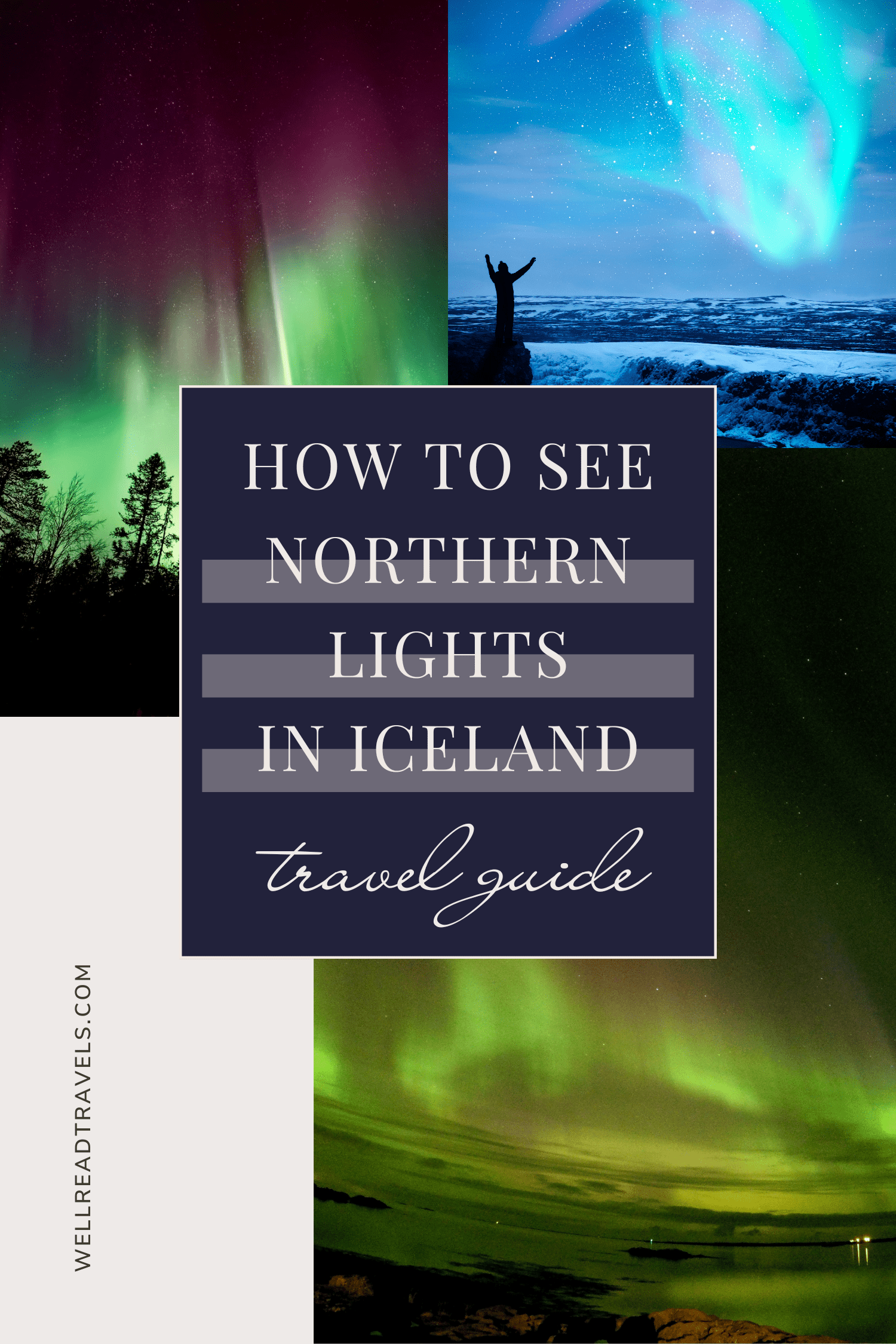

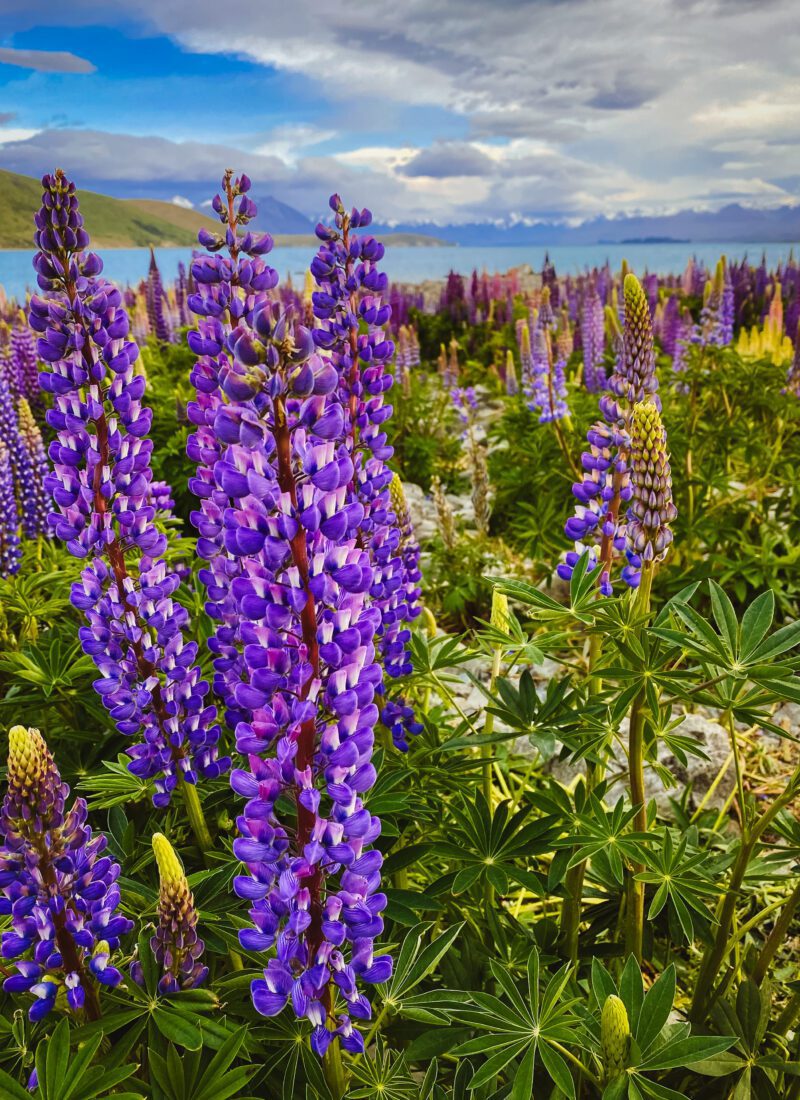
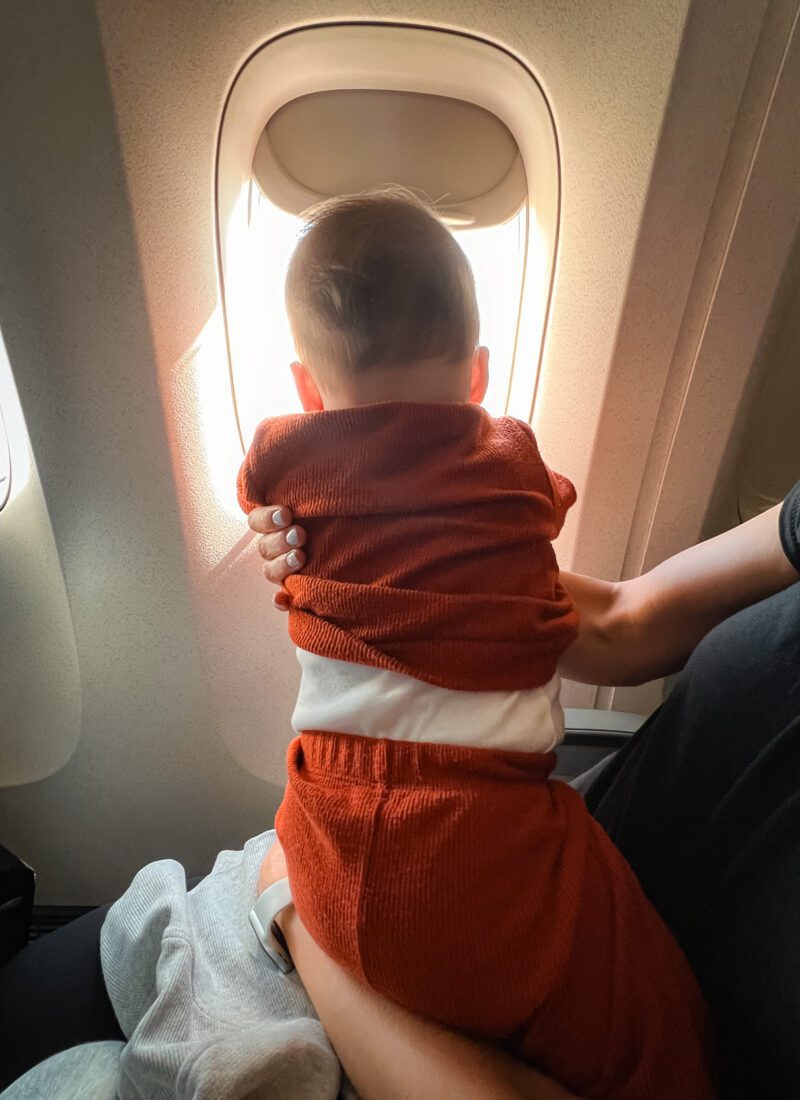


Leave a Reply